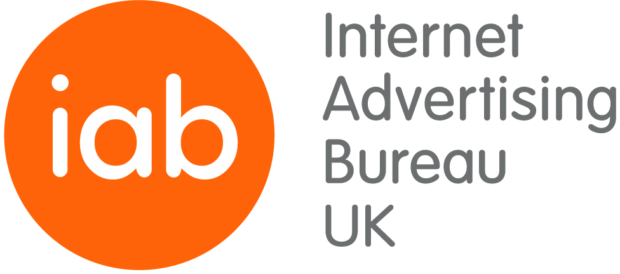Ad Effectiveness Cannot Be Achieved if Brand Safety Measures Aren't Implemented
by Lindsay Rowntree on 4th May 2017 in News

In the latest column from the IAB's Display Trading Council, Daniel Bigmore (pictured below), agency and creative platforms lead, ONE by AOL, with contribution from Yahoo and Integral Ad Science, explains that the digital industry collectively needs to face the music and increase safety, transparency, and education to turn negatives into positives where brand safety and ad effectiveness are concerned.
The spotlight is shining on the industry right now and even though it comes from a negative place, there is an opportunity to make a real impact and promote positive change. Collectively, we need to provide hard and fast solutions to the issues brands face in today’s digital world. Although brand safety and ad effectiveness may seem like two separate topics, they are intrinsically linked.
Understandably, and obviously, advertisers are actively seeking brand safety measures, as they do not want to be associated with ‘unsafe’ or harmful content. We’re all acutely aware of how that can harm an advertiser’s image and, in turn, their revenue. And it’s not only advertiser revenue that will be hit – agency partners and associated tech providers will also feel the pinch in their pockets if nothing is done soon.
Of course, ad effectiveness is not going to be achieved if brand safety measures are not implemented; but that’s not the only factor we need to be mindful of. If the advertiser does not consider crucial factors, such as niche data segmentation, a holistic view of the consumer journey (on and offline) and dynamic creative, then the campaign will result in minimal engagement or, worse, negative ‘nuisance’ brand association.
Quality vs Quantity
Lizzie Knights, head of audience and programmatic at Yahoo adds that, in the world of programmatic advertising, brands may be challenged to balance reaching audiences where they consume media (quantity), with having ads appear in exclusively brand-safe contexts. Unfortunately, those two goals don’t always align. Most consumers don’t limit their online content consumption to premium, professionally produced sites (quality) that brands prefer to be associated with.
Further complicating the issue is that what’s 'safe' is different for every advertiser. A hotel brand might want to avoid advertising on an article titled 'The Worst Travel Experiences', while a travel agency may seek out those types of placements to offer their services.
The right tools for the job

Daniel Bigmore, Agency & Creative Platforms Lead, ONE by AOL
This is where advertising technology partners are essential allies in helping advertisers reach the right consumers, at the right time, and in the right contexts. Ad tech partners should help advertisers target their core audience, whilst also factoring in a brand’s specific needs and sensitivities. At a minimum, advertisers should expect their programmatic partners to offer controls for avoiding certain types of content, as well as URL-level transparency for targeting and reporting. The industry should:
- Offer the ability to block objectionable content like hate speech, illegal, and sexually explicit content through the implementation of both proprietary and third-party technologies across all content.
- Establish and enforce strict advertising policies for advertisers and content policies for the publishers it connects.
- Encourage a combination of tools involving man and machine. This includes industry-approved proprietary technologies, third-party integrations, human monitoring, including regular updating of white and black lists, and industry partnerships, with the goal of ensuring that every placement sold is high-quality, whilst minimising risk.
Integral Ad Science (IAS), a neutral technology vendor, recognises that brand safety was once a problem that was discussed solely within the advertising industry; but with the steady increase in extremist content, fake news, and brand advertising appearing next to unsavoury content, it has become national frontpage news.
Brand safety is not an issue that is going to disappear, so how can brands protect themselves?
Below are five tips from IAS that brands can implement to help ensure they minimise the risk to their brand:
- Go deep. Domain-level protection is not enough. Different web pages on a website have different content topics, with different levels of risk. Make sure you’re getting page-level protection for true coverage.
- It’s not black or white. Don’t rely on just one or two methods to protect your brand. Use a combination of blacklists, keywords, and page-level analysis for a comprehensive solution.
- Blocking. Sometimes planning and pre-set parameters aren’t enough. Add blocking to your brand safety solution, so your ads are prevented – in real time – from serving near risky content.
- Don’t just set it and forget it. Make sure your blacklist, keyword list, and parameters are up to date – and review them on a regular basis.
- Give your programmatic some performance enhancers. Leverage pre-bid targeting in DSPs to ensure your ads appear on safe environments. With pre-bid targeting segments, you can target away from risky content.
Now that brands, agencies, and the wider general public are aware of the extent of brand risk within our industry, we can hopefully all come together to address the challenge and provide effective solutions.
So, where do we go from here?
Enter condition-based programmatic advertising. It makes headway in solving many of the issues associated with brand safety and enhances ad effectiveness by encouraging advertisers to implement certain conditions or parameters. If the parameters for each campaign – such as page context, user profile, location etc. – are not met, the ad is simply not served. The inclusion of these conditions aims to enhance ad personalisation and, as a result, sees increased engagement. Inevitably, this kind of personalisation slightly reduces scalability, but premium ad experiences win the day.
Of course you can implement scalable advertising strategies across premium websites. But if you want scalable personalised campaigns, then that’s tricky, if not an oxymoron – we’re all different and at different stages in our own lives. For reassurance, working closely with inventory partners will help implement scalable advertising strategies, especially when operating with a media owner like Yahoo or AOL, that offers a ‘house of brands’, for example.
Full-stack solutions that are seamlessly integrated across ad server, DSP, DMP, and creative platform – covering both demand- and supply-side touchpoints – is a plus. But, as a collective, we need to shift this perception in digital advertising to a more positive standpoint by discussing, debating, educating, and sharing ideas around what we can do, both within our organisations and with partners, to enhance brand safety measures, increase transparency and awareness of what measures are available, and provide best practice and guidance to advertisers wishing to generate increased brand awareness and return on investment.








Follow ExchangeWire